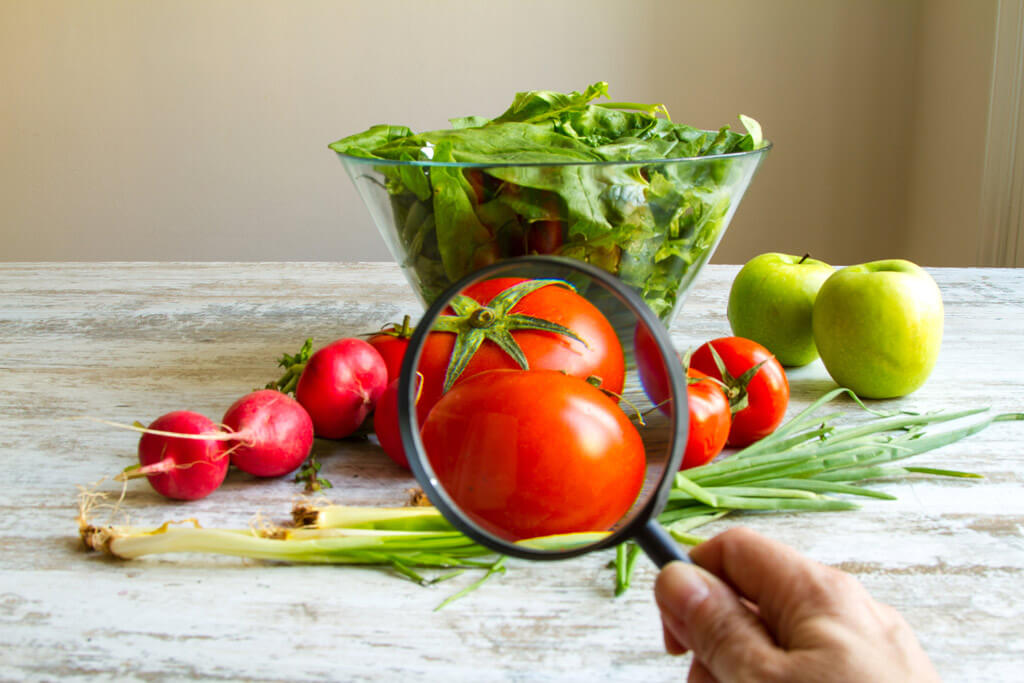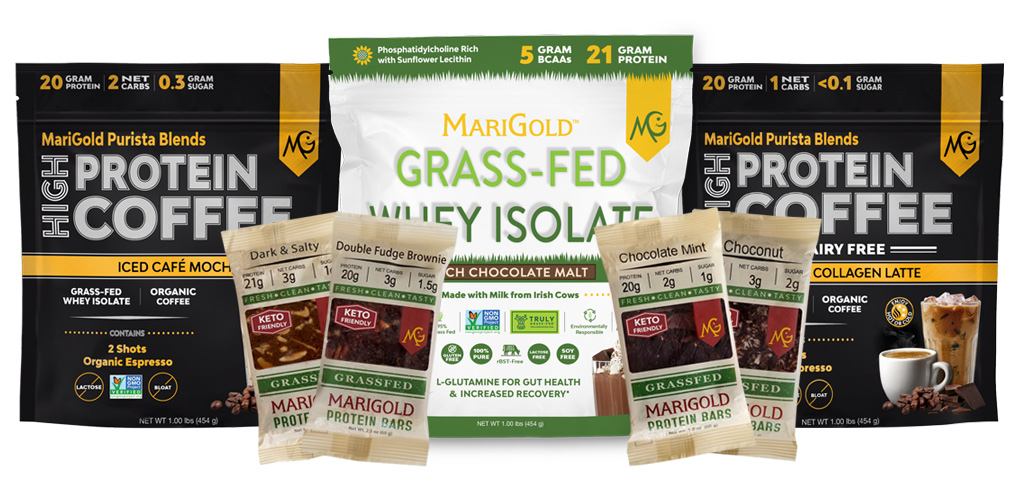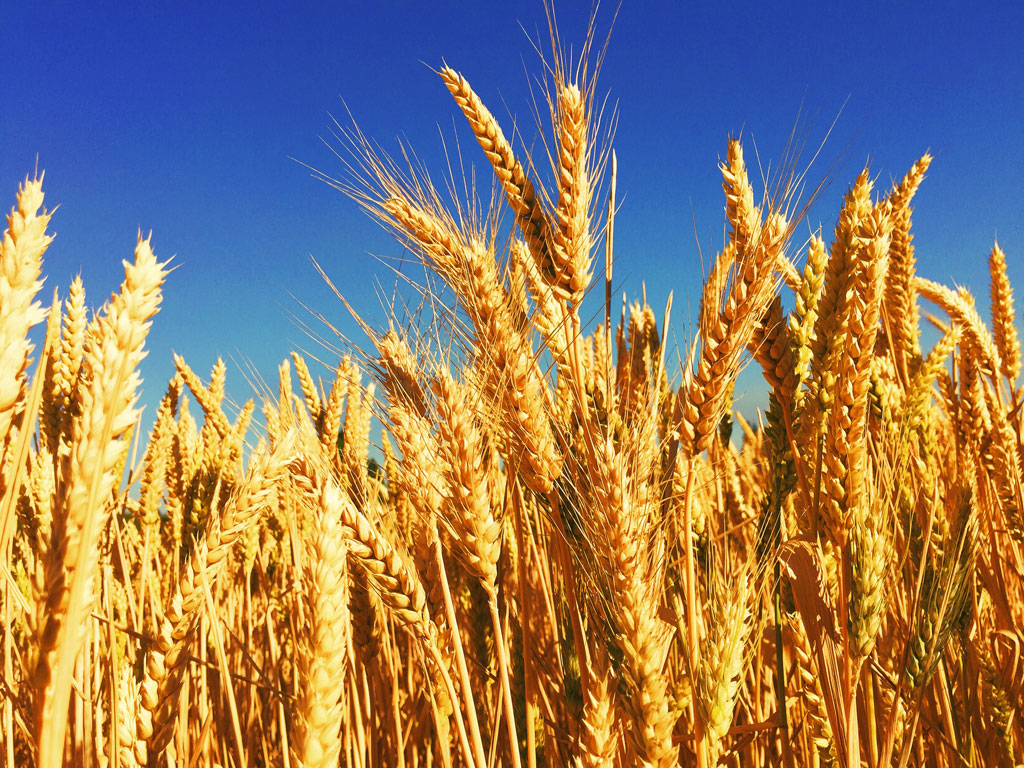Wouldn’t it be nice to have a personal chef who shops for organic, locally produced food and prepares all your meals and snacks from scratch? It would certainly be a delicious way to eat a diet that’s clean and nutritious. But most of us live in the real world, where convenience is king, and packaged and prepared foods substitute for the idyllic chef.
To help you navigate today’s complex food choices, here are 7 pitfalls to avoid:
1. Gluten Overload
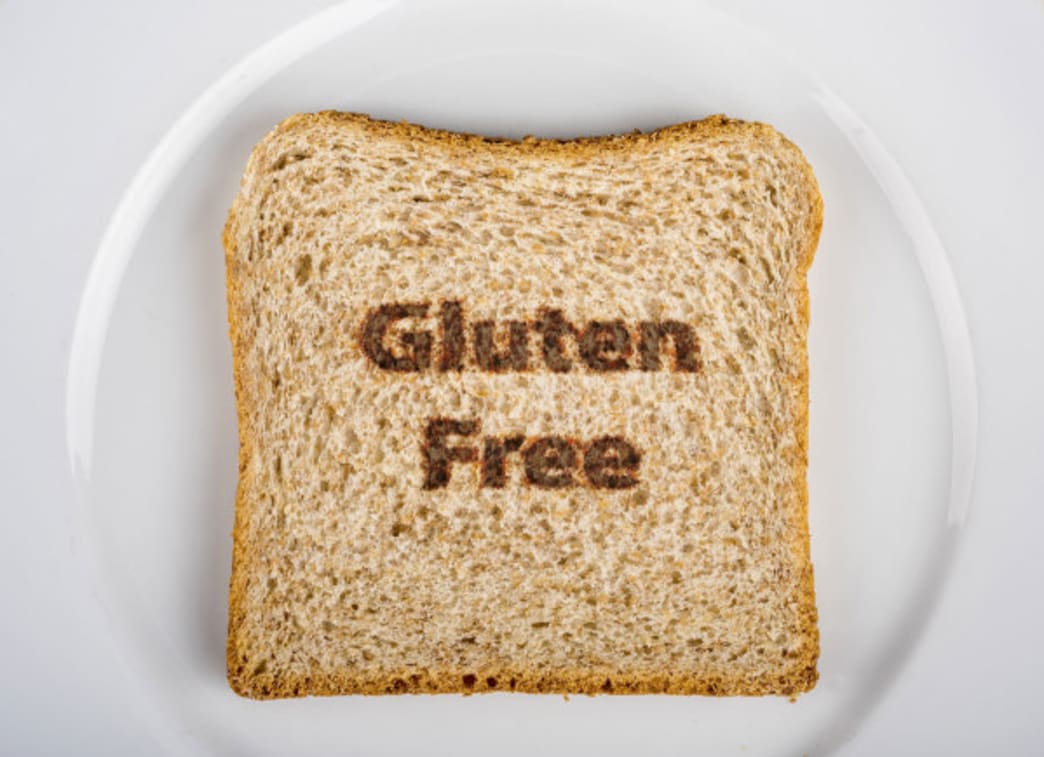 Better Nutrition
Better Nutrition
Gluten sensitivity is skyrocketing, and it parallels the increase of gluten in our food. We eat more wheat than we did a few decades ago, and extra gluten is added to many packaged and processed foods, from sauces and soups to sausages, cold cuts, and even veggie burgers. Oddly enough, whole wheat bread may well contain more added gluten than its refined cousin, to counteract the naturally dense consistency of whole grain bread. Added gluten gives bread a spongier, more desirable texture.
Although the phenomenon isn’t fully understood, eating large amounts of gluten may lead to intolerance. In nature, gluten is found in all types of wheat, rye, and barley, but oats, other grains, and other foods may also be contaminated with gluten if they’re not labeled “gluten-free.”
2. Toxic Weed Killer
Glyphosate, the active ingredient in Roundup, is the most widely used weed killer around the world. It isn’t allowed in organic farming, but is sprayed on most conventionally grown corn and soy, which are genetically modified to withstand the herbicide’s toxicity. In addition, glyphosate is sprayed on wheat and other grains at harvest time to speed up the ripening process. And meat and milk from animals that eat glyphosate-contaminated grain can contain residues.
Scientists from the United States and Germany found that glyphosate disrupts gut bacteria and hormones, damages DNA, and is linked to cancer and a host of other diseases, including Parkinson’s, Alzheimer’s, and multiple sclerosis. The weed killer also impairs the heart’s ability to generate energy and kills liver cells that are essential for detoxification, according to research at Wake Forest University in Winston-Salem, N.C.
Another German study found that people who ate conventionally produced food, including grains, vegetables, dairy products, and meat, had the highest levels of glyphosate in their bodies, and high levels correlated with chronic illness. Researchers noted: “The presence of glyphosate residues in both humans and animals could haul the entire population toward numerous health hazards.”
3 Pesticides
Residues from pesticides used to kill bugs that can damage crops also remain on our food. A French study of 69,000 adults found that those who ate organic food most of the time had 25-percent lower odds of cancer and significantly lower risk of diabetes than those who never ate organic food. Conventional fruits and vegetables were the top pesticide sources, followed by soy foods, legumes, grains, breads, and cereals.
While the same pesticides cannot be used in organic farming, the chemicals can drift and contaminate neighboring fields. But compared to conventional foods, organic foods still contain only a trace or none, and eating mostly organic food can dramatically reduce pesticide levels in your body.
One study found that one week of eating 80-percent organic, instead of 80-percent conventional food, reduced levels of organophosphates— neurotoxins and likely carcinogens—by 89 percent. Another found that 6 days of eating an all-organic diet reduced levels of these by 95 percent, and levels of other pesticides by 37–83 percent, depending on the chemical.
4. Chemical Food Additives
More than 2,000 synthetic preservatives, colors, and other chemicals are used in conventional—not organic—packaged foods, according to a report by the nonprofit Environmental Working Group: Organic: The Original Clean Food. And the lack of FDA oversight may surprise you.
“The same companies that manufacturefood chemicals are allowed to declare them safe,” says Melanie Benesh, EWG legislative attorney and report coauthor. “It’s like the fox guarding the hen house.” Some of these additives are likely or known carcinogens and endocrine disruptors, or have other potentially adverse health effects.
In comparison, less than 40 synthetic ingredients are allowed in organic packaged food, including vitamins, fibers, and substances used to clean manufacturing equipment. Their safety is reviewed by independent experts every five years. Organic food cannot contain artificial flavors, colors, or preservatives.
5. Genetically Modified Foods (GMOs)
Starting in 2020, some labeling of GMOs will be required, but meanwhile, any disclosure is voluntary. Foods modified to withstand toxic weed killers, such as corn and soy, may contain higher chemical residues. In other cases, there is debate about the risk of foreign genes acting as allergens.
6. BPA
Short for bisphenol-A, BPA disrupts hormones and can contribute to weight gain and possibly diabetes, high blood pressure, and heart disease. BPA is found in the linings of cans, plastic containers, paper receipts, and fast-food meat products.
A study at California Polytechnic State University in San Luis Obispo found that women who switched to BPA-free food containers and cosmetics for three weeks had significantly lower levels of the chemical in their bodies. And, they lost some weight.
7. Phthalates in Fast Food
Although their risk is still being debated, phthalates are banned from toys in the U.S., are known to disrupt hormones, and have been linked to high blood pressure, diabetes, heart disease, and cancer. For years, plastic containers, skincare and hair products, and synthetic fragrances have been known sources of phthalates. But these problematic chemicals are also found in fast food.
Testing of nearly 9,000 people, at The George Washington University in Washington, D.C., found levels of these chemicals were up to 40 percent higher in people who had eaten fast food during the previous 24 hours. Fast-food items that contributed to high levels of phthalates included meat and foods made with grain, such as bread, pizza, burritos, rice, noodles, and cakes. As if there already weren’t enough reasons to avoid fast food, this is another one.
A Low-Gluten Diet Improves Health
A Scandinavian study compared the effects of diets that were low and high in gluten, and found that when healthy, middle-aged adults ate a low-gluten diet for 8 weeks, they felt better and effortlessly lost a little weight. Low-gluten eaters also experienced less chronic inflammation as well as improvements in the quality of gut bacteria, peptide YY (a hormone that regulates hunger).
The low-gluten diet contained about 2 grams of gluten per day, equivalent to about one slice of American bread. The high-gluten diet contained about 18 grams per day—still less than the estimated American average of about 22 daily grams.
Although gluten quantity isn’t listed on food labels, you can sometimes estimate it. Gluten makes up 70–75 percent of the protein in wheat. Therefore, if one slice of wheat bread contains 3 grams of protein, it likely contains a bit more than 2 grams of gluten. A sandwich with 2 slices would contain between 4 and 5 grams.
Did You Know?
Since 1977, the amount of gluten added to breads and other foods has tripled, according to USDA research.
What to Do
If you aren’t following a gluten-free diet, go easy on grains and avoid foods with added gluten, which is listed as a separate ingredient. In addition, look for foods that don’t contain artificial flavors, colors, or preservatives.
Eating organic food is the simplest way to avoid most pitfalls, but when this isn’t
possible, the nonprofit Environmental Working Group has identified the “Dirty Dozen”—fruits and vegetables with the highest pesticide levels. These are most important to buy organic (ranked from most toxic to least):
- Strawberries
- Spinach
- Kale
- Nectarines
- Apples
- Grapes
- Peaches
- Cherries
- Pears
- Tomatoes
- Celery
- Potatoes
Other Good Options
- Non-GMO Project Verified foods
- Grass-fed meat
- Pasture-raised chickens and eggs
- Meat and dairy products from animals raised without antibiotics or rBST, a widely used synthetic hormone
Helpful Apps and Sites
- The Non-GMO Project Shopping Guide: livingnongmo.org
- The Environmental Working Group’s Healthy Living App: ewg.org/apps
- The Center for Food Safety: centerforfoodsafety.org
Which Foods Are Genetically Modified?
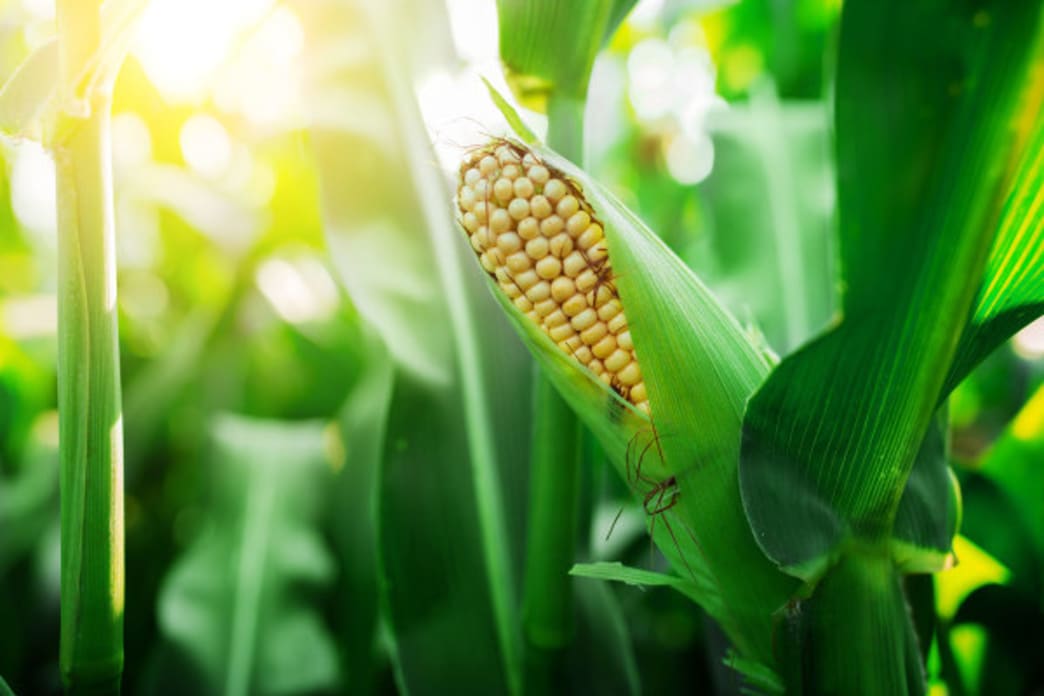 Better Nutrition
Better Nutrition
According to the USDA, non-organic versions of the following six foods are typically genetically modified:
- Corn
- Soybeans
- Sugar beets
- Papaya (U.S.-grown)
- “Arctic” varieties of apples
- AquAdvantage salmon
Some of these four foods may also be genetically modified:
- Alfalfa
- Canola
- Potatoes (Atlantic, ranger russet, russet burbank, and white russet)
- Squash (zucchini, yellow straight-neck, and yellow crookneck)
Many health food stores refuse to sell GMO foods. In addition, the nonprofit Non-GMO Project has verified and certified more than 50,000 foods that don’t contain GMOs. For details, visit livingnongmo.org.
Written by vera-tweed for Better Nutrition and legally licensed through the Matcha publisher network. Please direct all licensing questions to legal@getmatcha.com.
Featured image provided by Better Nutrition
Eat non-GMO and Gluten-Free with MariGold!
When it comes to eating healthy, non-GMO, gluten-free snacks, MariGold has you covered!
You don’t have to worry about gluten or GMOs here, because everything we make is non-GMO and gluten-free!
You see, our company was started all because there wasn’t a single protein bar on the market that met owner, Mari Ann’s strict requirements – one of which was that it needed to be REAL FOOD, all-natural ingredients without “franken-foods” or chemicals.
Along with that, they needed to also be high-quality protein, low sugar, no artificial sugars or sugar alcohols, and grain-free (true gluten-free).
You can read the entire MariGold Story here about how the MariGold Protein Bar was created!
From there, things took off and today we have not only delicious, non-GMO, high quality Protein Bars, but have added non-GMO Fat Bombs, Snack Nuts, High Protein Coffee, Grass-Fed Whey Protein Isolate, and Grass-Fed Collagen Peptides.
Our High Protein Whey Isolate Coffees, Whey Protein Isolate Powders and Protein Bars are even non-GMO Project Verified, which is the most trusted non-GMO label among consumers because of the rigorous testing process a product goes through to comply with strict standards. Be sure to be on the lookout for more non-GMO Project Verified labels on MariGold products in the near future as well!
In addition, everything we make is also soy-free, gluten-free, grain-free, hormone-free, sugar alcohol & sucralose-free.
At MariGold, we are committed to bringing you the highest quality, pure, non-GMO snacks and foods possible.


